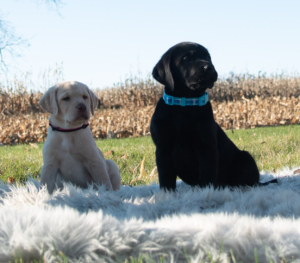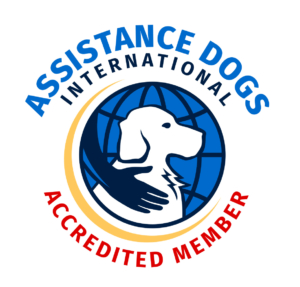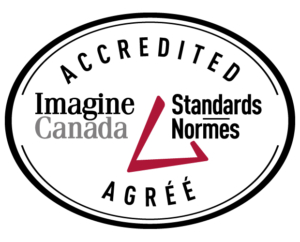The Importance of Sit
Teaching your dog cues does more than just give them tricks to do, it helps build a bond with you, exercises their brains, and builds up good listening skills.
“Sit” is often the first cue a puppy learns. Teaching your dog how to sit on cue may not seem exciting, but it can be a life-saving skill.
The Training Intention
The goal is for your dog to respond quickly and reliably when cued to “sit”.
When your dog is first learning this cue, make sure you have their full attention and focus. By the time the puppy is four months old, you should be using “sit” throughout the day.
Then you can try the command randomly and start to link it to things the puppy enjoys. It’s great to connect “sit” to things they want, like attention, toys, going for a walk, or food. Pay attention when your puppy sits and reward them with one of these positive reinforcers.
Give yourself a daily goal for training. Try for a dozen “sits” a day and build it up over time. You should also try using “sit” in different environments, like while on a walk or at the park.
Real Life Rewards

When you start training, using food helps the dog to connect the cue and expected behaviour with a good outcome. However, once the dog has the idea behind the cue, you should use real-life rewards more often. This helps the dog learn that good things happen when they listen. It will also make sure your dog will listen when you don’t have a treat for them.
Use real-life rewards, like toys, praise, and you! The puppy will learn that cooperating with you gets them what they want – love and attention!
Keep in Mind
Once your dog understands and responds to the cue, it’s good to fade the lure as quickly as you can. Again, you don’t want your dog to expect luring or only respond to the cue when lured.
In the same idea, don’t give the dog the reward or get them a better reward if they don’t respond. It will work against any training if you reward a non-response or bribe them with a more desirable reward.
Instead, be sure to praise your dog when they respond quickly! Make sure they know that they responded perfectly!
Remember that your dog should hold the “sit” command until you release them, but don’t forget to give the release command. Start with a short amount of time and build up the length of the “sit”, but always give adequate praise for positive behaviour.
Most importantly, keep training sessions positive – be calm and patient. Your dog will respond to your positivity. For more information, tips on training and activities for your dogs, check out our other blog posts.
If you’re interested in learning more about NSD and our current puppies-in-training, visit https://nsd.on.ca/meet-our-dogs/





